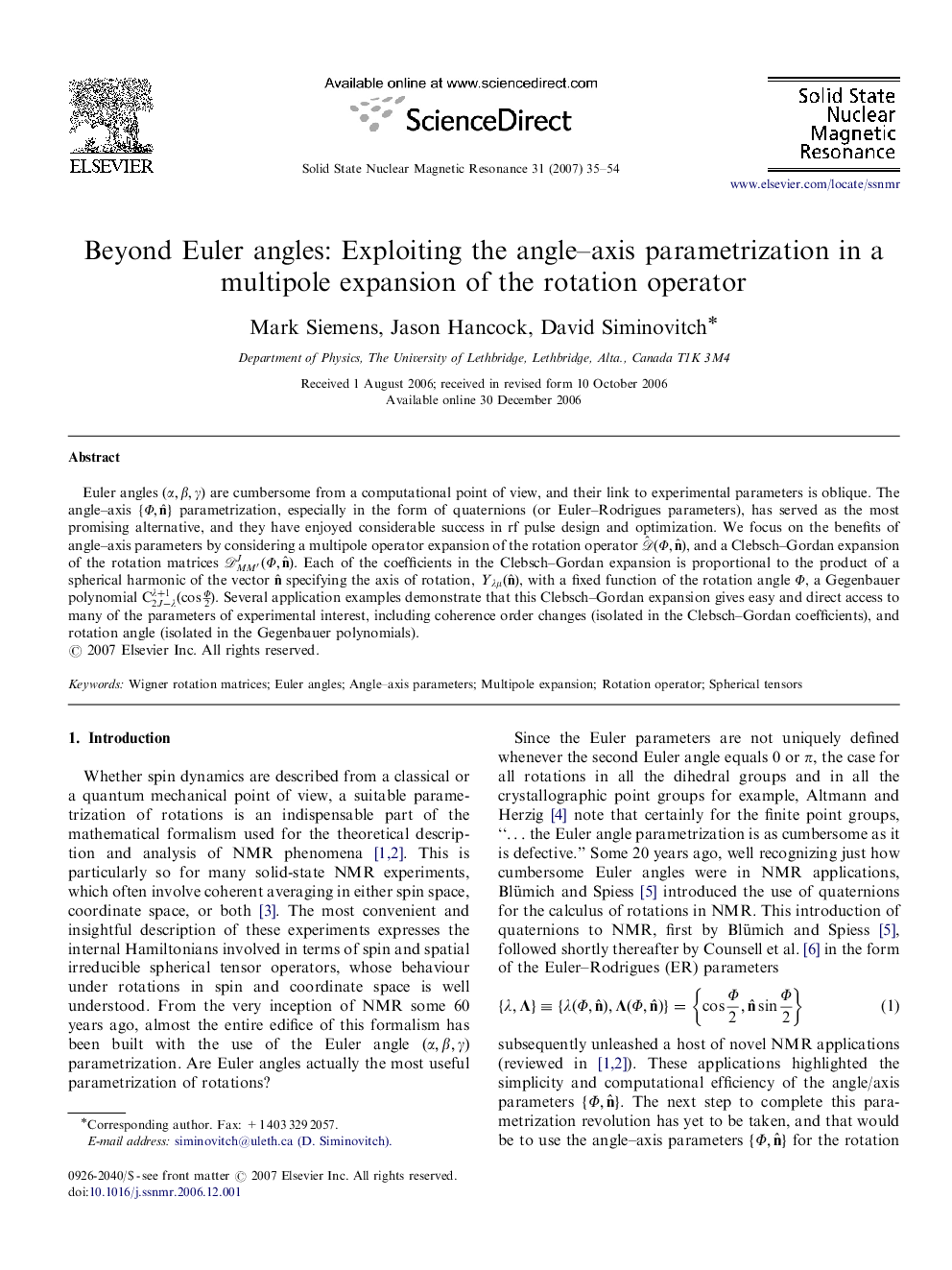| Article ID | Journal | Published Year | Pages | File Type |
|---|---|---|---|---|
| 5420884 | Solid State Nuclear Magnetic Resonance | 2007 | 20 Pages |
Abstract
Euler angles (α,β,γ) are cumbersome from a computational point of view, and their link to experimental parameters is oblique. The angle-axis {Φ,n^} parametrization, especially in the form of quaternions (or Euler-Rodrigues parameters), has served as the most promising alternative, and they have enjoyed considerable success in rf pulse design and optimization. We focus on the benefits of angle-axis parameters by considering a multipole operator expansion of the rotation operator D^(Φ,n^), and a Clebsch-Gordan expansion of the rotation matrices DMMâ²J(Φ,n^). Each of the coefficients in the Clebsch-Gordan expansion is proportional to the product of a spherical harmonic of the vector n^ specifying the axis of rotation, Yλμ(n^), with a fixed function of the rotation angle Φ, a Gegenbauer polynomial C2J-λλ+1(cosΦ2). Several application examples demonstrate that this Clebsch-Gordan expansion gives easy and direct access to many of the parameters of experimental interest, including coherence order changes (isolated in the Clebsch-Gordan coefficients), and rotation angle (isolated in the Gegenbauer polynomials).
Keywords
Related Topics
Physical Sciences and Engineering
Chemistry
Physical and Theoretical Chemistry
Authors
Mark Siemens, Jason Hancock, David Siminovitch,
